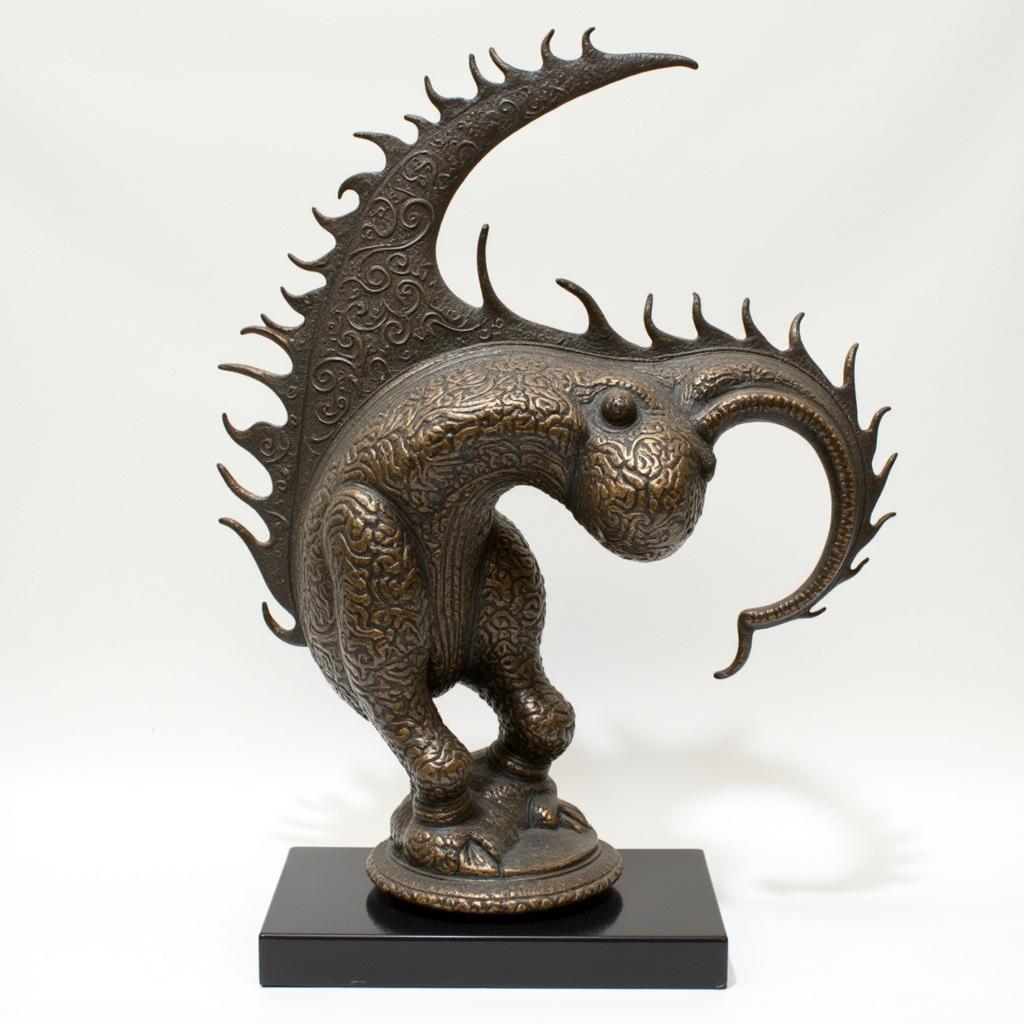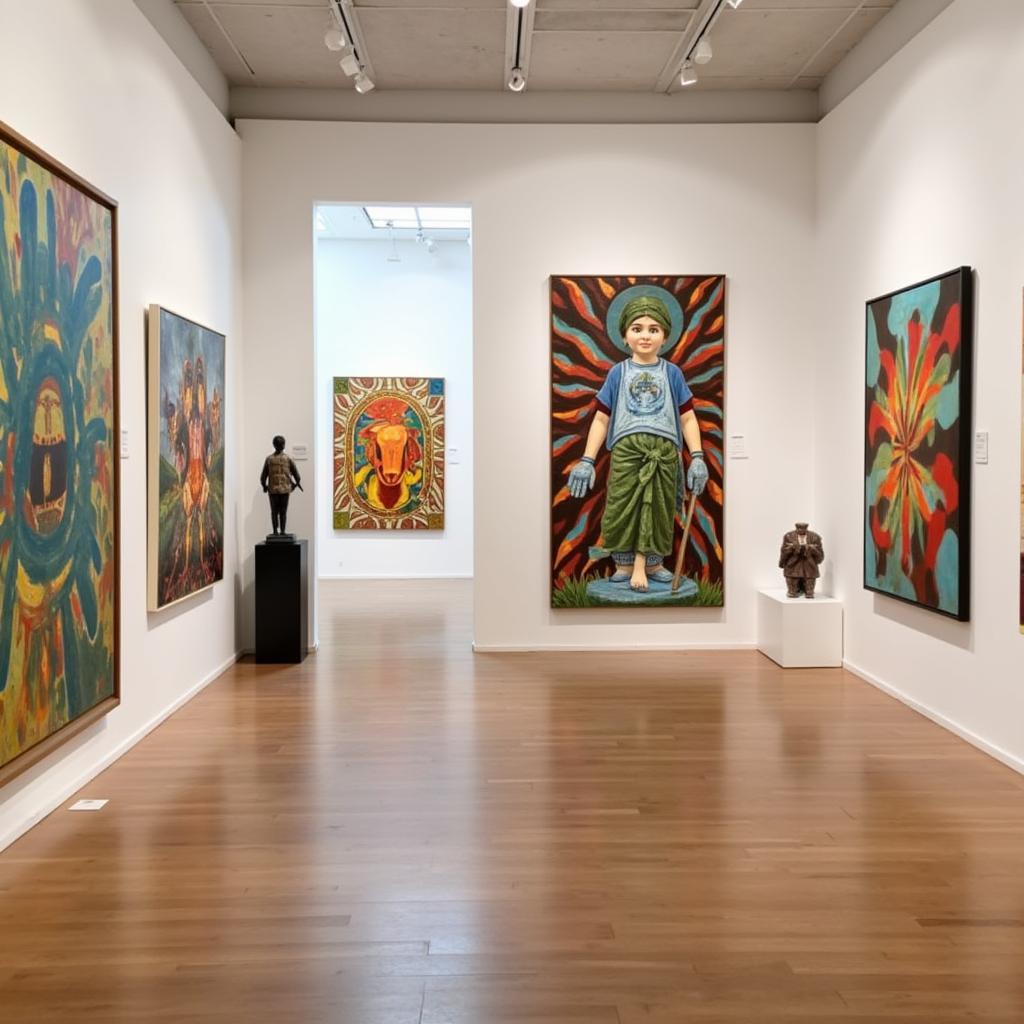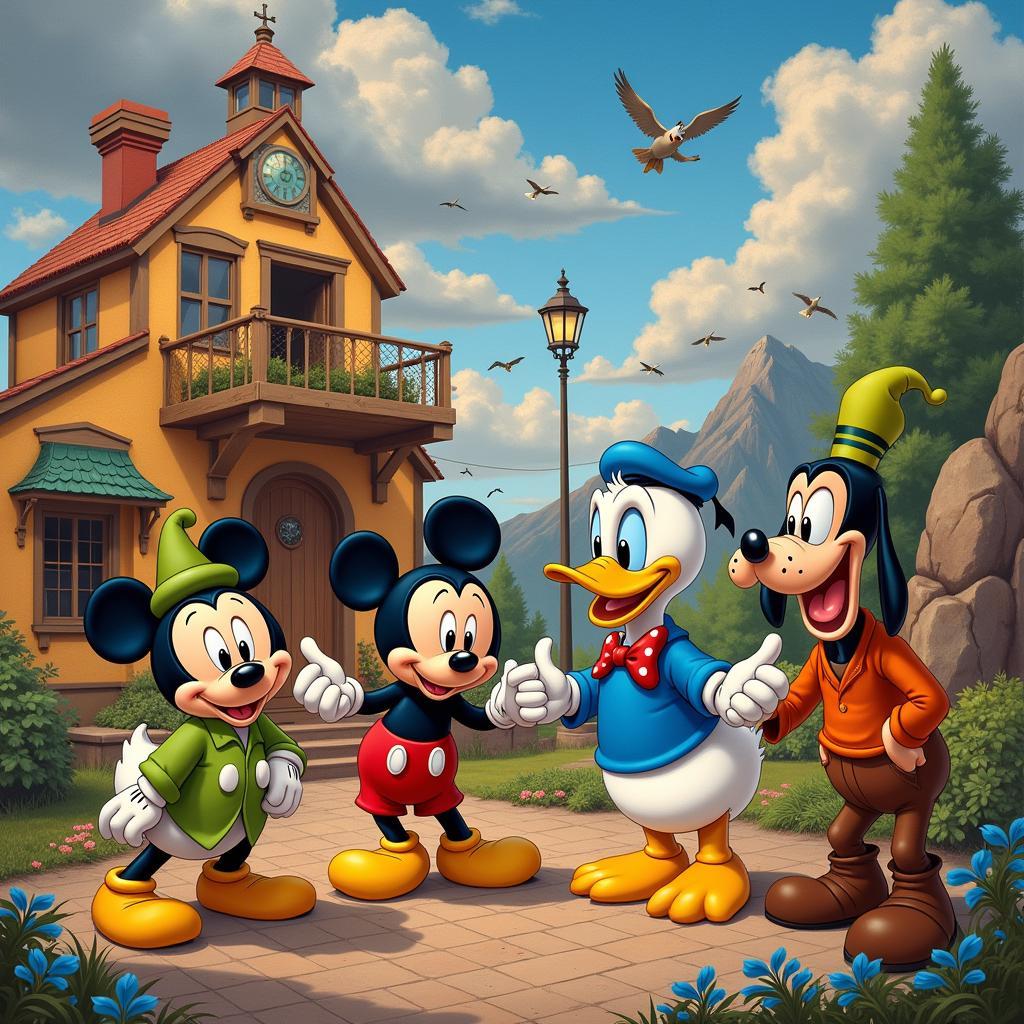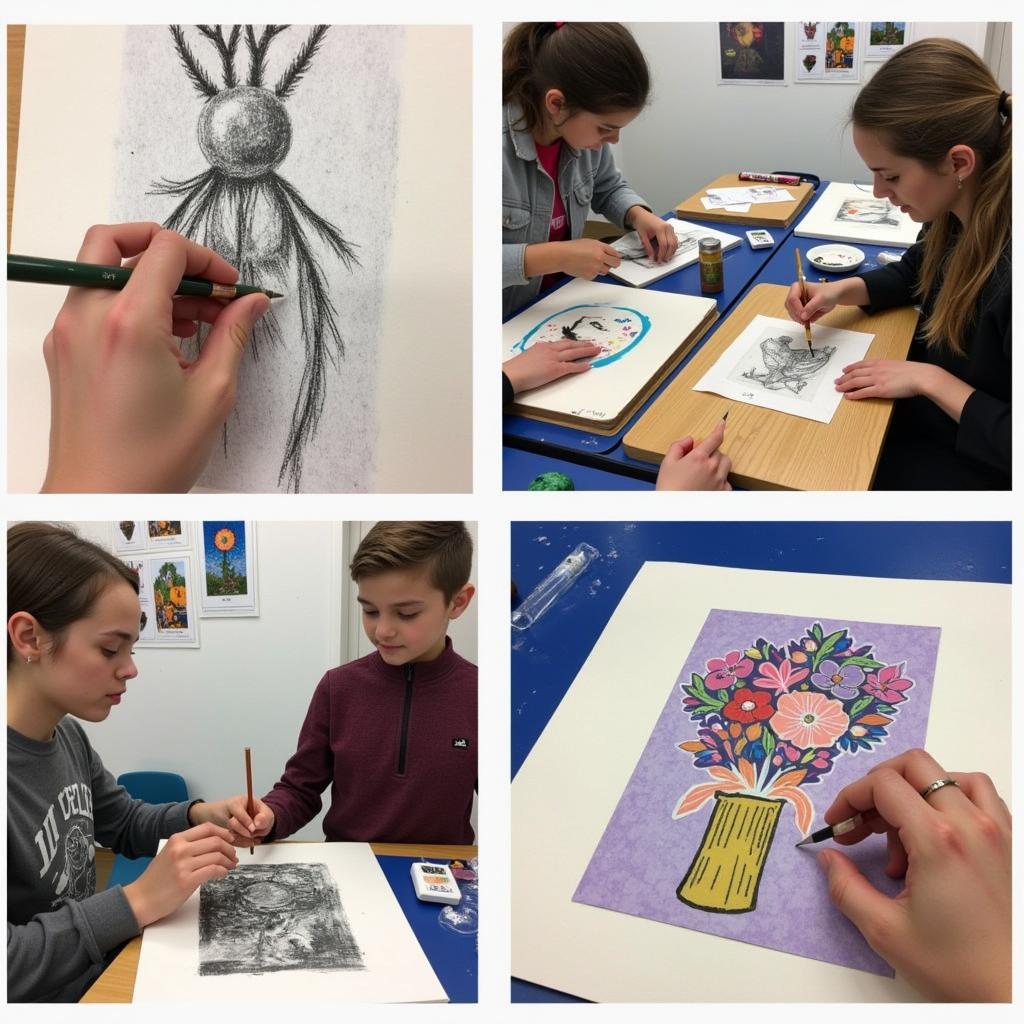Exploring the Vibrant Realm of Abstract Modern Indian Art
Abstract Modern Indian Art represents a captivating fusion of tradition and innovation, drawing inspiration from India’s rich cultural heritage while embracing the principles of abstract art. This dynamic art form emerged in the early 20th century and has since evolved into a powerful expression of India’s artistic identity on the global stage.
 Abstract Modern Indian Art Painting
Abstract Modern Indian Art Painting
The Genesis of a Movement: Breaking from Tradition
The seeds of abstract modern Indian art were sown during a period of significant social and political change. Artists sought to break free from the constraints of traditional academic art, which often focused on realistic depictions of mythology and history. They were influenced by Western art movements like Cubism, Surrealism, and Abstract Expressionism, adapting these styles to reflect their unique cultural perspectives.
One of the pivotal figures in this movement was Raja Ravi Varma, often hailed as the father of modern Indian art. Varma’s paintings blended European academic realism with Indian sensibilities, paving the way for future generations of artists to experiment with new forms and ideas.
Key Characteristics of Abstract Modern Indian Art
Abstract modern Indian art is characterized by a distinctive visual language that combines elements of abstraction with subtle references to Indian culture and spirituality.
- Bold Use of Color: Inspired by the vibrant hues of India’s landscapes, festivals, and textiles, artists often employ a rich and varied color palette to evoke emotion and symbolism.
- Geometric Forms and Patterns: Geometric abstraction plays a significant role, with artists incorporating geometric shapes and patterns that allude to traditional Indian architecture, textiles, and decorative motifs.
- Spiritual Undertones: Many artists draw inspiration from India’s spiritual heritage, incorporating elements of Hinduism, Buddhism, and other belief systems into their abstract compositions. This can manifest in the use of symbolic colors, forms, and themes that evoke a sense of transcendence or inner peace.
 Indian Abstract Art Sculpture
Indian Abstract Art Sculpture
Pioneers of Indian Abstract Art: Shaping a New Vision
The abstract modern Indian art movement was spearheaded by a group of visionary artists who challenged conventions and redefined the boundaries of Indian art.
- F.N. Souza: Known for his bold lines, distorted figures, and a raw, expressionistic style, Souza’s work often explored themes of religion, sexuality, and the human condition.
- Vasudeo S. Gaitonde: A master of abstract painting, Gaitonde’s canvases are characterized by luminous layers of color, meditative compositions, and a profound sense of spirituality.
- S.H. Raza: Raza’s art evolved from early figurative works to abstract explorations of color, light, and geometric forms. He is particularly renowned for his “Bindu” series, in which a central black circle represents the source of creation.
The Enduring Legacy of Abstract Modern Indian Art
Abstract modern Indian art continues to flourish in the 21st century, with contemporary artists pushing the boundaries of the movement while honoring its rich legacy. This art form has gained international recognition, with works by Indian abstract artists featured in prestigious museums and galleries worldwide.
The appeal of bombay wall art lies in its ability to transcend cultural boundaries, inviting viewers to connect with its emotional resonance and aesthetic beauty. Whether exploring themes of spirituality, identity, or social commentary, abstract modern Indian art remains a vibrant testament to India’s creative spirit and its enduring contribution to the global art world.
 Modern Indian Art Exhibition
Modern Indian Art Exhibition
Exploring Further: Frequently Asked Questions
What are some of the key themes explored in abstract modern Indian art?
Abstract modern Indian artists often delve into themes of spirituality, identity, cultural heritage, social change, and the human condition.
Where can I see examples of abstract modern Indian art?
Major museums like the National Gallery of Modern Art in New Delhi and Mumbai, as well as international institutions such as the Tate Modern in London and the Museum of Modern Art in New York, often feature collections of abstract modern Indian art.
How has abstract modern Indian art influenced contemporary art practices in India?
The legacy of abstract modern Indian art continues to inspire contemporary artists, who often experiment with new mediums, techniques, and conceptual approaches while building upon the foundations laid by earlier generations.
What is the significance of color in abstract modern Indian art?
Color plays a vital role in conveying emotion, symbolism, and cultural references in abstract modern Indian art. Artists often draw inspiration from the vibrant hues of India’s landscapes, traditions, and spiritual beliefs.
Seeking Inspiration? Discover More About Indian Art
Eager to delve deeper into the captivating world of Indian art? Explore our curated collection of metal wall art india and discover the perfect pieces to elevate your space with a touch of Indian artistic brilliance. You can also browse our selection of light purple wall art for a touch of serene elegance.
For any inquiries or assistance, please don’t hesitate to contact our dedicated customer support team:
Phone: +84 24 6257 3573
Email: danteum@gmail.com
Visit us at:
Savico Megamall, 7-9 Đ. Nguyễn Văn Linh, Gia Thụy, Long Biên, Hà Nội 10000, Việt Nam.
We’re available 24/7 to assist you on your artistic journey.



